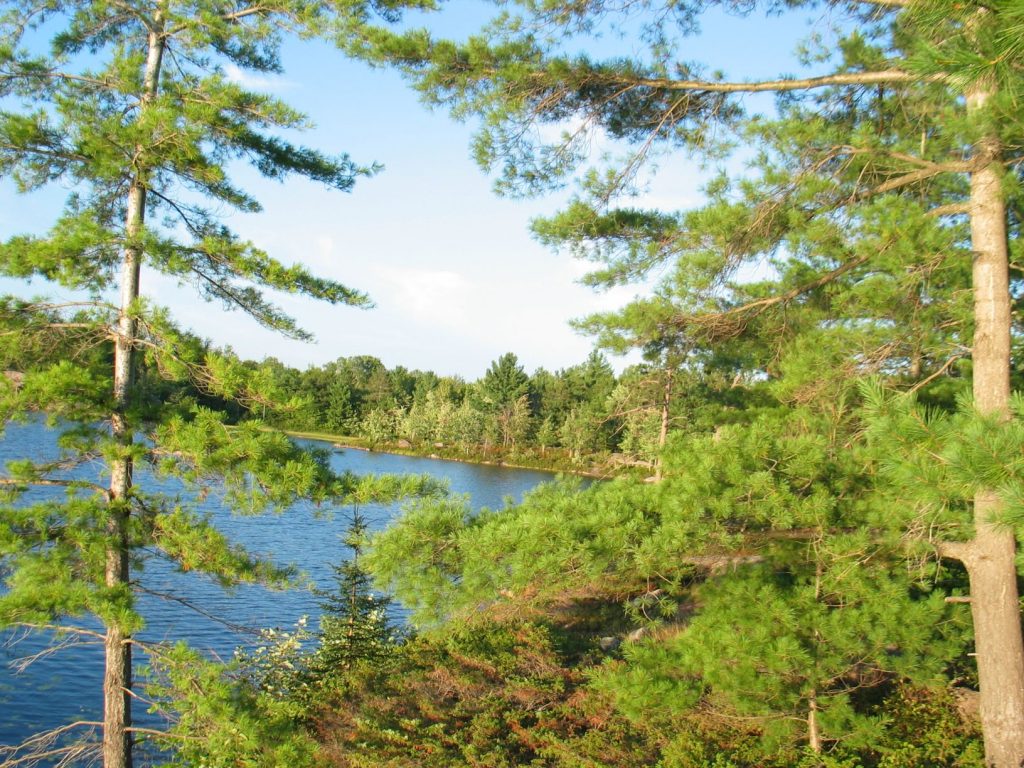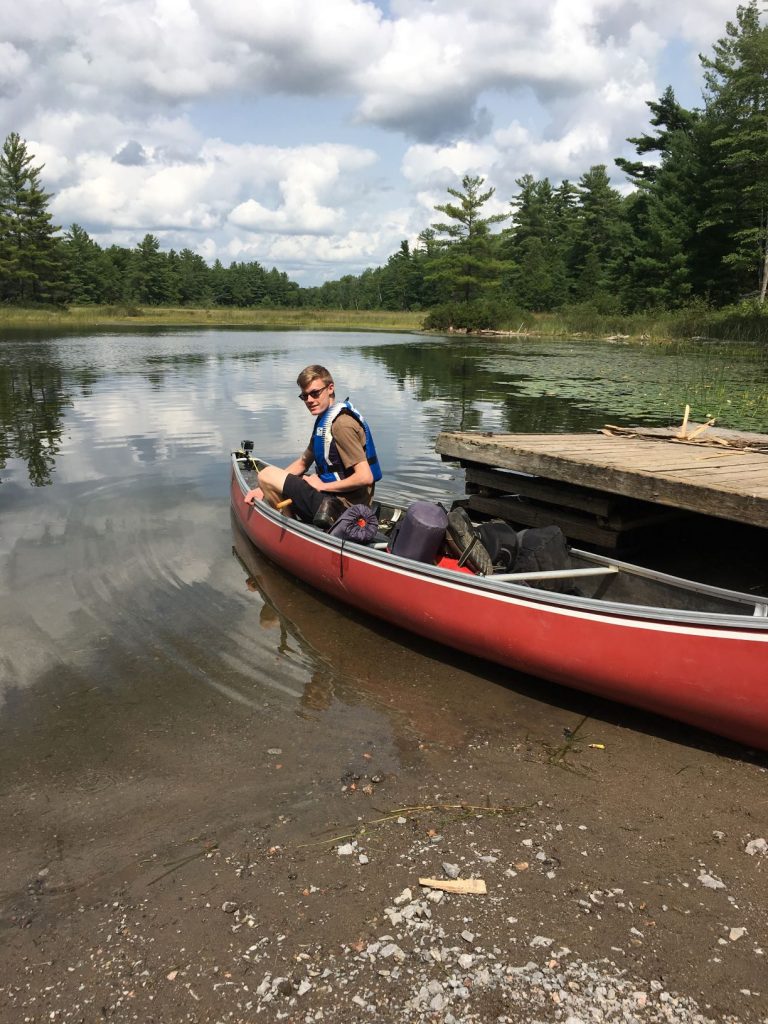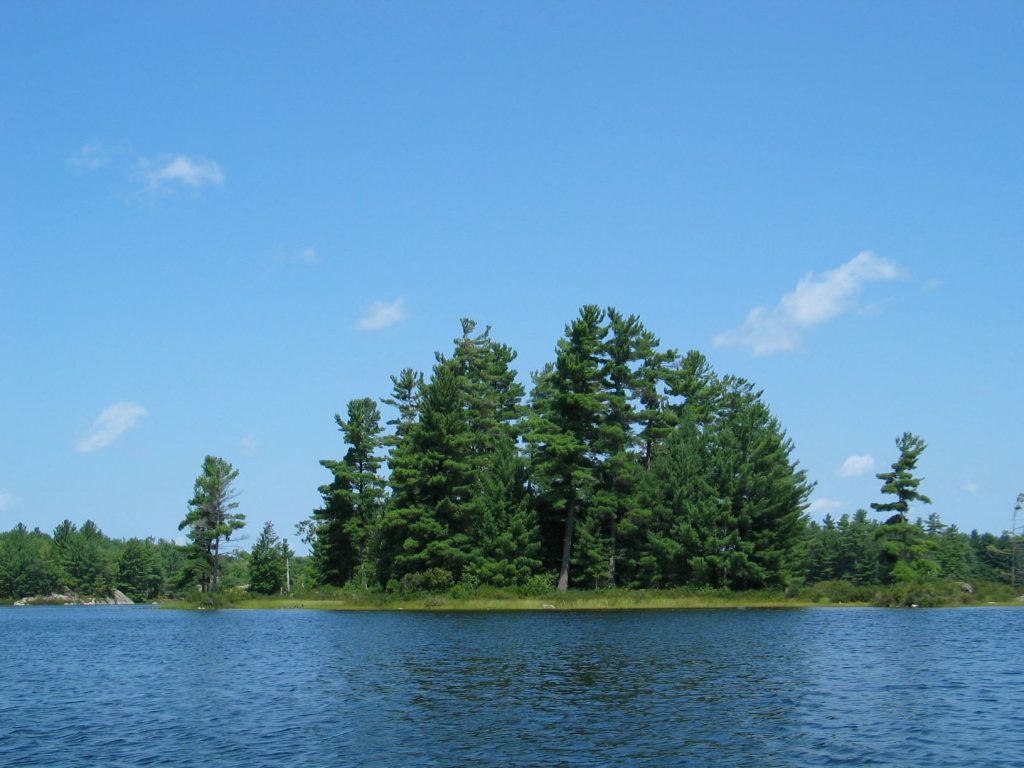
Hello and good day, eh!
Pamela: My name is Pamela
Tim: And I’m Tim
Pamela: And we’re from SuperGoodCamping.com. We’re here because we wanted to educate and inspire other families to enjoy camping adventures such as we have with our kids.
And today’s topics are we wanted to do another camping menu day and we wanted to talk a bit about a backcountry adventure that was successful. So I’ll turn it over to Tim as far as a camping menu day.
One Day Camping Menu
Tim: Ok, so Pamela will post sort of a sample menu. This one was a couple of years ago when we went to Arrowhead for the second time. A fairly typical day would be, on Tuesday we did pancakes and sausages in the morning. Nice and easy whether you’re doing it over an open fire or you’re on your Coleman stove or what-have-you or just a single burner. Although it’s always nice to be able to run two pans at the same time. You’re not always taking equipment that allows you that kind of space. Not a big deal to do the sausages first, wrap them up in some foil or whatever and then do the pancakes. It will give you some time to dice up some apples for your pancakes or dig the blueberries out of the cooler because you buried them when you were supposed to leave them on top. You know that sort of stuff. There’s a nice quick morning and then you have children to wash the dishes. Lunch, we have kabobs slated for that. And we cook up extra pork the evening before so that it’s quick and easy to do. Big fat dices of pork, some apple some zucchini, what else have we done? Some pineapple on it.
Pamela: Cherry tomatoes
Tim: Yep
Pamela: Peaches and plums are also really yummy on the kabobs.
Tim: We’ve done chicken. Pamela doesn’t do so well with red meat, but the boys and I have done big thick steak pieces. That sort of a deal. And again they’re pretty easy. We have a lot of kabob skewers which we can never seem to find when we’re about to make kebobs, so we also have a big backup bag of bamboo skewers which you soak in water for a while beforehand so that they don’t turn into a piece of crispy char. And then we did salmon and vegetables for dinner. We take cedar planks up with us. You can buy them online on Amazon or whatever you can pick them up at Crappy Tire or Home Depot, I think Costco was the last batch that we got. Anyhow, you soak them in water for a couple of hours. Here’s an easy one, when you don’t have a big sink. Take a garbage bag and put them in there with some water. Try to squeeze as much of the air out as possible, and then knot it off. Keep flipping it over every once in a while, just to make sure that the water gets around. Put the prepared salmon the cedar planks on the barbeque or on the fire, whichever one you’re going to do. I usually do a big lemon on each plank, depending on how many salmon fillets you’re going to do. I do thick slices of lemon, put them on the plank, and then put the salmon on top of that. If it’s on the barbeque I close the lid, not necessarily for the whole thing, but it does help cook it a little bit quicker, and keeps it a bit juicier. I think if you were doing it over the open flame, I think I would tent it with a bit of tin foil. And then you can season it with your own flavour whether it’s a premade one that you’ve picked up off the shelf at Loblaws. Or I often throw a bunch of stuff together and then sprinkle it on, I don’t even know what it is most of the time. I would say 20’ish minutes, at medium heat, and Bob’s your uncle. There’s a delicious day. You’ll see on the menu that we also have a snacks column, because you want something to munch on while you’re sitting around the campfire at night. That can be anything from marshmallows, or Jiffy Pop. Jiffy Pop is always a fun one. S’more’s. Spider weiners, where you take a weiner and cut it maybe a third to halfway down. Cut an x in it and when you put it on a skewer to put it into the fire, you put the uncut end on the skewer, put it into the fire, and as it cooks it opens up and curls those sliced bits and it looks like the legs of a spider or you can do it on both ends and then put the skewer through the middle and then it’s a full eight legs for the spiders. You know, it’s fun stuff.
Kawartha Highlands Provincial Park Backcountry Camping
Pamela: That’s it for our camping menu day. As I mentioned there was another trip to Kawartha Highlands.
Tim: Alright, so this was a successful one. This would have been the following year, 2018. Thomas and I went. We did six nights or seven nights, six nights I think. So we went in through the south end of the park. Coon Lake was our access point, I think. I’m looking at our map now and it looks like it was about an hour and a half, maybe a bit more all told, from where we started to our first campsite, which was on Little Turtle Lake. It was funny, Pamela asked Thomas what he remembered about that trip. And the first thing he said was about a different trip, then he went “oh yeah, that’s the one where we portaged a lot”.

It’s funny because I’m looking at the map and I can see all of the portages on it. And no, I think the issue is that it was our first go-round so it seemed like a lot. But it’s by far, of our 3 backcountry trips since it’s by far the least amount of portaging that we’ve done. It’s also nowhere near the nastiest, this last one that we just did in Killarney, was pretty rough. So we went into Little Turtle Lake, site 470, we stayed there for 2 days. Note that I’m going a bit easier, I backpedaled from the hardcore, go a long distance, change sites every day from the previous attempt at backcountry camping that went so badly. Although we did pretty close to that the next trip after this. So we did that, we went on quite a decent amount farther north to Vixen lake after that. Spent two days there at site 443. That was a really cool site. It was very high up. It was like an isthmus. A peninsula type bit of business sticking into the lake so a very commanding view all the way down the lake. Nobody around. We did see a couple on a site, but they were like ants. They were very very small, we could see that they were there, but they were so far away they were very small. We had to go for a paddle one day and we saw that they were there. After 2 days there, we headed back. We spent 2 nights at Adams lake, site 461. That was quite cool because we were the only ones on the lake. Nobody around at all. We had a bear encounter on the way from the portage into the lake itself. Fortunately, we didn’t see Mom, but we did see two cubs scampering up the hill, so we paddled a little bit quicker after that. It was great. Actually, a number of parks have areas where there are grandfathered cottages or they allow them. Kawartha allows hunting so there are hunting cabins in some areas of the park. There was a hunting cabin. It took us a while to figure out what the heck it was. Again, I was fairly new to the park and didn’t know everything about it. It was just this weird building on the other side. Anyhow, thankfully nobody was there, we had the lake to ourselves for 2 days. We did some fishing, caught a couple of nice bass. Which made for a pretty killer dinner one night. I think I have pictures of it. It was a really good trip. I can’t recall any negative, fantastic weather, a little buggy but not terrible.

Pamela: Just a little bit more about Kawartha Highlands. So backcountry-wise, it’s considered a semi-wilderness destination. It’s not too far from Toronto. A couple of hours from Toronto and along the southern edge of the Canadian Shield. It features a rugged, rolling landscape with small lakes, wetlands, forest, and rocky barrens. It has a wide range of camping options for beginner to advanced and 6 canoe routes. There are lots of birds, so loons, herons, osprey, whip poor wills, nighthawks, tanagers, and towhees. And then the park’s lakes are home to a wide range of fish species, Tim mentioned having caught a couple of bass, there are lake trout, brook trout, rainbow trout, splake, walleye, small and largemouth bass, and panfish. And there are 17 stocked trout lakes in the park. And lots of opportunities for swimming, and beautiful clear lakes for swimming and well-marked portages and campsites. Each campsite has a picnic table, fire ring, and a box privy. And most campsites, have at least 3 tent pads.
Tim: I just wanted to mention as you were reading through that list, I went oh yeah, I believe it was at the Adams lake campsite, we saw the coolest thing. It’s a five-lined skink. They’re very few and far between. We saw an adolescent, I think is the right term. It’s the younger ones and they actually have a blue tail. It happened to be crawling along, we didn’t have a fire going, it was crawling through the rocks in our firepit. Thomas was the one who spotted it. I saw a flash of blue and that was cool. I’ve never seen one in my life. Thomas has a real knack for focusing on little things like that, he often picks up tiny salamanders or sees a snake where nobody else, we all plowed through and nobody else spotted it.
Pamela: Well, and the five-lined skink is the only lizard that is native to Ontario.
And that’s it for us for today. Have a wonderful rest of your day and we’ll be back again next week. Our email address if you’d like to reach out to us is hi@supergoodcamping.com, that’s “h” “i” at supergoodcamping.com. We would love to hear from you if you have any questions, concerns, or if there’s anything that you would like us to talk about. Thanks.
Pamela: Bye!
Tim: Bye!
